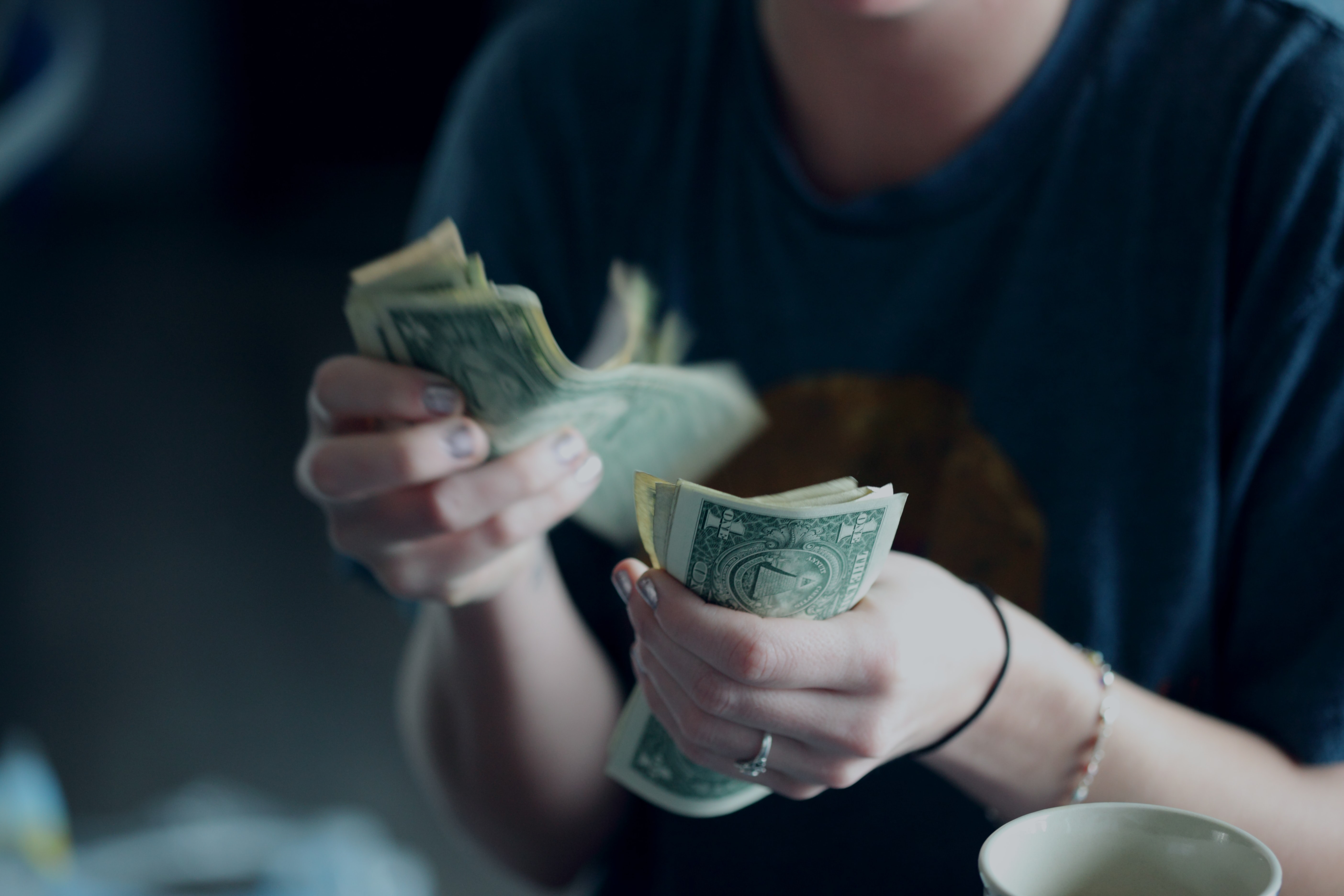Are you finding it difficult to find a few extra bucks to spend on something actually for yourself? You’re not alone, a study done in the United Kindom shows millennials have less to spend on non-essentials than the prior generation. Not to worry, we’re here to help with a few suggestions on how to increase your personal cash flow.
What is Personal Cash Flow?
Though Investopedia defines cash flow as “The net amount of cash and cash-equivalents being transferred into and out of a business”, personal cash flow applies to the amount of money in your bank account. Having a higher net cash flow means more money in the bank to use on whatever you would like.
There are three ways to increase personal cash flow. They are as follows:
- Decrease Spending
- Increase Income
- Delay Payments
Now lets take a look at a few untraditional ways to apply these principles and keep that piggy bank full.
1. Keep Your Car Tires Inflated
Who knew that monitoring tire pressure could help manage your cash flow? By keeping your tires inflated to the recommended PSI in your owner’s manual, you can improve your ride’s MPG up to 3%.

This might not seem like a lot, but for the avid commuter 3% can add up quickly and can easily save a few hundred dollars per year. More money saved equals increased personal cash flow.
2. Pay Your Bills with a Credit Card
The main way corporations increase their cash flow is by delaying payment to suppliers. This tactic increases the money they have in their pocket now, so they can utilize it to invest in other activities. Some payment terms can go out as far as six months!
Imagine paying your electric bill 6 months later? Must be nice huh?
Usually asking for extended payment terms isn’t an option for us average joes, but there is a way to artificially extend your payment terms. This is by paying bills with a credit card.
Pay your bills with the credit, and then pay off the balance within thirty days before the billing cycle ends. This pushes back the payment due date and extends your payment terms by a whole month, adding a month’s worth of expenses into your pocket. Not a bad hack huh?
3. Upgrade Your HVAC System
Investing in a new HVAC system may seem a bit daunting at the prices they go for. Especially ones that tout the label energy efficient. You may be wondering if purchasing a new HVAC system is really worth the large upfront cost. We’re here to tell you it is.
A new energy-efficient system can cost around $8,000 but will save you 20-30% on your monthly utility bill. This puts most yearly savings at the $500 mark plus the 30% tax credit up to $1,500.
This adds up to be a 6.25% return on investment, which is very close to what an S&P 500 index fund will return. Not a bad investment that puts more money in your pocket every month.
4. Buy a Grill
The grill itself won’t help you increase personal cash flow, but the way you use it will.
Having family cook-outs is a great way to increase the number of meals you eat at home, relative to the ones you spend out at a restaurant or buying take-out. Your family can still enjoy the freshly prepared meal they have been craving while staying under budget.
Replacing just one take-out meal a week in the warmer months can add up to $100 / a week to your cash flow for a family of four. And who knows, maybe the kids will be more into veggies if they’re grilled?
We took a more in-depth look at our article on recreational investments. Check it out if you need a little more persuading.
5. Put Down a Few Rugs
I mentioned in a prior post that adding insulation can decrease the cost of your utilities, but did you know that insulation comes in the form of rugs as well?
Putting down rugs over your hardwood floors can help trap the heat and cool air from escaping through the floorboards. Acting as another layer of insulation
You don’t have to spend a fortune to get the benefits either. You can purchase discount area rugs from large chains such as Walmart or Amazon that still have the great utility saving effect as a plush Persian rug.
6. Trade-In That Craft Beer For a Gin & Tonic
Want to save money on your drinking habit without having to sacrifice quality? If you’re an avid craft beer connoisseur, try diving into a different part of the lake with a gin & tonic in hand.
With your typical six-pack of craft brew running at twelve dollars a pack, you’ll be able to save a considerable amount by switching to a decent brand of the hard stuff. We ran the numbers of what you would save a month if you had six beers a week versus six gin & tonics.

- Cost Per Handle of Beefeater Gin: $50
- 1 Liter of Tonic Water: $1.38
- 1 Gin & Tonic (1.5oz Gin & 4.5oz Tonic): $1.47
- Saving Per Drink: $0.53
- Cash Flow Increase Per Year: $165.36
7. Adopt a Dog
In the personal finance world, having a dog is most noted for the extra cost they bring and not necessarily for the money our little furry friends will save. When we take a step back and think of the activities we do with our pups, they are mostly ventures that don’t cost a dime.
- Taking the dog for a walk – Free
- Going on a Hike – Free
- Fetch – Free
Look at what activities that you won’t participate in instead. You likely won’t go out to dinner as much, spend less time going to bars, and participate in fewer trips to the mall. Do your own business case assessment before you go ahead with a large life decision such as adopting a dog. But this could increase your personal cash flow in the long run.
8. Use Smaller Plates

This one might help you lose weight too. A Stanford study conducted in 2006 showed that a random sample of nutrition experts served themselves 31% more ice cream when given a large bowl versus a small bowl.
You might be eating more than you need without thinking twice. With this logic, you might be able to save 31% on your grocery bill.
Why not give this a shot and make a small investment for petite plates? With the average family of four spending $600/month on groceries, this could put up to $186/month in your pocket. Not bad!
9. Shop with Rakuten
I’ll start by saying this is not an affiliate link, but any website that pays you to shop has my endorsement. Using Rakuten to shop for things that you would normally purchase can save you anywhere from 0.5% to 15%.
It is easy to get carried away and buy things you don’t need when you’re getting money back for purchases, so make sure to be disciplined! Only shop for what is in your budget and what you would normally be buying if you weren’t getting paid for it. This is what will increase your cash flow.
If you become self-indulgent with Rakuten and spend 30% more than what you budgeted this will do you a disservice. Use Rakuten, but don’t go overboard.
10. Drink More Water
What is the cheapest drink of them all? Water!
Drinking water not only helps with hydration, but replaces more costly drinks such as soda, juice, or your favorite adult beverage. Though these are relatively cheap drinks, if you manage to cut out even $2-3 worth of soda or juice a day with increased water consumption this adds up to $60-90 a month!
Not only will you save money on other drinks, but this article by Johns Hopkins claims that 2 glasses of water before a meal can decrease food intake by 22%. Less food intake equals less food that you need to buy at the grocery store. This goes to show that you can save hundreds a month just by drinking more of the world’s oldest beverage.
Final Words
Whether it is taking in a few more dollars by shopping with Rakuten, saving a few bucks by switching to a different adult beverage, or extending your payment terms by paying for bills with a credit card. we hope you walked away with a few ideas on how to keep more money in your bank account.
Have any other creative ideas to increase personal cash flow? Let us know in the comments!



Another reason to drink a gin and tonic, who am I to argue with good financial advice.